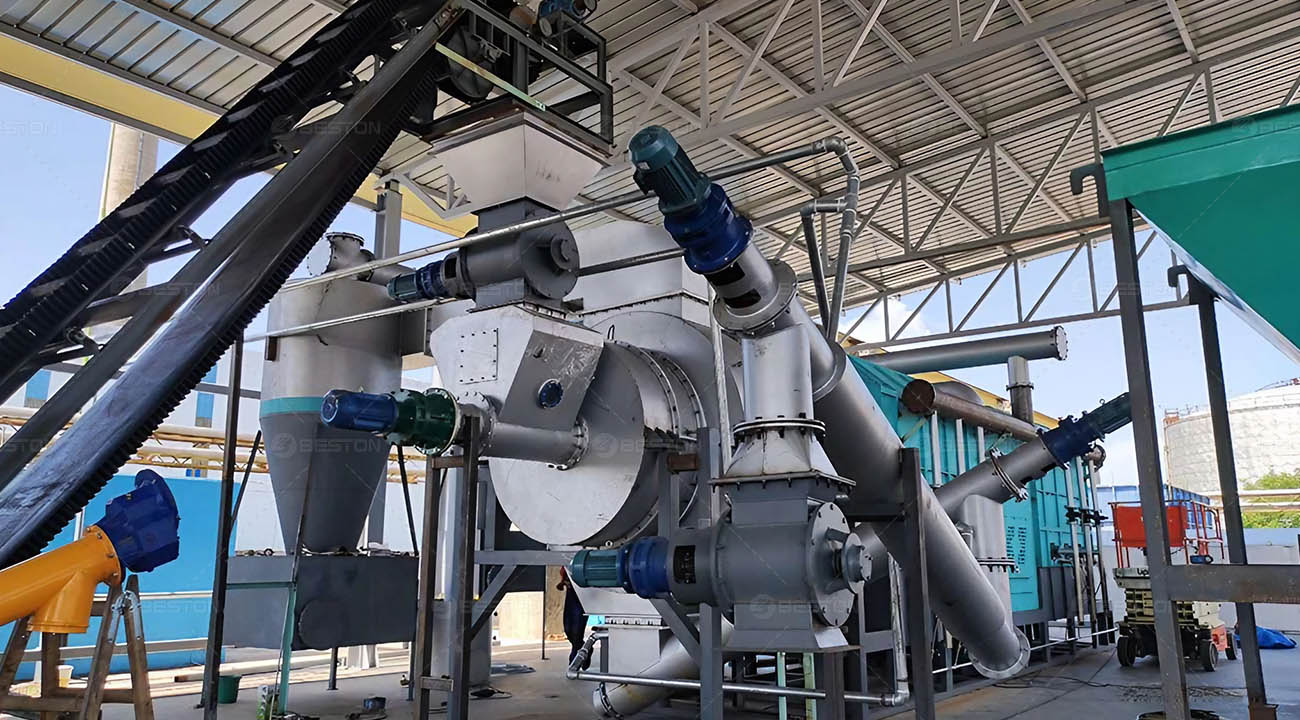Biochar, a carbon-rich material derived from biomass, has gained prominence for its role in soil enhancement, carbon sequestration, and sustainable agriculture. The efficiency of biochar, however, is intricately tied to its carbon content. In this exploration, we delve into the nuanced methods and advanced techniques employed to increase carbon content during biochar production, unlocking the full potential of this eco-friendly resource.
Understanding the Significance of Carbon Content in Biochar
Before delving into the methods of enhancing carbon content, let’s establish why it matters. The carbon content of biochar directly influences its ability to sequester carbon in the soil, improve nutrient retention, and enhance overall soil structure. A higher carbon content often correlates with increased porosity and stability, crucial factors in biochar’s effectiveness.
Factors Influencing Carbon Content in Biochar:
-
Feedstock Selection: The type of biomass used significantly impacts the carbon content. Certain feedstocks inherently possess higher lignin content, contributing to a more carbon-rich biochar.
-
Pyrolysis Conditions: The temperature and duration of the biomass pyrolysis process play a pivotal role. Optimizing these conditions is essential for maximizing carbonization, ensuring the conversion of biomass into a high-carbon biochar.
Techniques to Increase Carbon Content in Biochar Production
1. Feedstock Optimization:
-
Selecting feedstocks with inherently higher lignin content can significantly contribute to increased carbonization. Lignin, a complex organic polymer, is rich in carbon and resists decomposition during pyrolysis.
-
Incorporating wood-based feedstocks, such as hardwood or nut shells, provides a natural boost to carbon content. These materials possess a favorable carbon-to-nitrogen ratio for optimal biochar production.
2. Slow Pyrolysis:
-
The speed at which pyrolysis occurs influences the resulting biochar. Biochar production equipment designed for slow pyrolysis allows for a more prolonged exposure of biomass to high temperatures. This extended duration fosters enhanced carbonization.
-
Slow pyrolysis minimizes the release of volatile compounds, promoting the retention of carbon in the biochar structure. This method aligns with the goal of maximizing carbon content.
3. Temperature Control:
-
Fine-tuning the pyrolysis temperature is a critical factor in achieving higher carbon content. Elevated temperatures, within the range of 500-700°C, favor carbonization over the production of volatile components.
-
Advanced biochar production equipment incorporates precise temperature control mechanisms. This ensures that the pyrolysis process optimally transforms biomass into carbon-rich biochar.
4. Carbonization Additives:
-
Introducing carbonization-enhancing additives during the pyrolysis process can elevate the carbon content. Calcium oxide (lime) and certain mineral-rich additives facilitate reactions that promote carbon retention.
-
These additives act as catalysts, influencing the chemical transformations within the biomass, leading to the formation of a biochar with heightened carbon concentration.

The Role of Technology in Maximizing Carbon Content
In the realm of biochar production, technological advancements have played a pivotal role in elevating carbon content. Biochar production equipment designed with precision and efficiency contributes significantly to the optimization of the carbonization process.
Technological Innovations:
-
Controlled Atmosphere Pyrolysis Chambers: State-of-the-art pyrolysis chambers maintain precise atmospheric conditions, ensuring an environment conducive to maximum carbon retention. These chambers allow for fine-tuned control over temperature, pressure, and gas composition.
-
Continuous Pyrolysis Systems: Continuous pyrolysis systems, integrated into modern biochar production equipment, streamline the production process. The continuous flow ensures consistent exposure of biomass to optimal pyrolysis conditions, promoting uniform carbonization.
-
Real-time Monitoring and Feedback Systems: Advanced equipment incorporates real-time monitoring of pyrolysis parameters. This enables operators to make instantaneous adjustments, ensuring that the process aligns with the goal of producing biochar with elevated carbon content.
Challenges and Considerations
While advancements in technology and techniques offer promising avenues for increasing carbon content, certain challenges merit attention:
-
Feedstock Availability: Sourcing specific high-carbon feedstocks may pose logistical challenges, especially in regions with limited access to diverse biomass resources.
-
Energy Consumption: Achieving higher temperatures for optimal carbonization requires energy-intensive processes. Balancing energy consumption with environmental sustainability remains a consideration.
-
Cost Implications: Implementing advanced biochar production equipment and additives may entail higher initial costs. A comprehensive cost-benefit analysis is crucial for evaluating the economic viability of these enhancements.
Future Trends and Sustainability
The quest to maximize carbon content in biochar production aligns with broader trends in sustainable agriculture and environmental conservation. As technologies evolve and awareness of the importance of carbon-rich biochar grows, future trends may include:
-
Integration with Circular Economy Models: Linking biochar production with circular economy principles, emphasizing the sustainable use of biomass and the return of biochar to agricultural systems.
-
Innovations in Additive Development: Ongoing research into novel additives and catalysts that enhance carbonization efficiency and contribute to the overall sustainability of biochar production.
Conclusion
In the journey towards sustainable agriculture and environmental stewardship, the optimization of carbon content in biochar stands as a crucial endeavor. Through the strategic selection of feedstocks, utilization of advanced biochar production equipment, and incorporation of innovative techniques, the goal of producing high-carbon biochar becomes an achievable reality. As we navigate the nexus of technology, ecology, and agriculture, the quest for carbon-rich biochar paves the way for a greener and more resilient future.

Comments
No comments yet. Be the first to react!